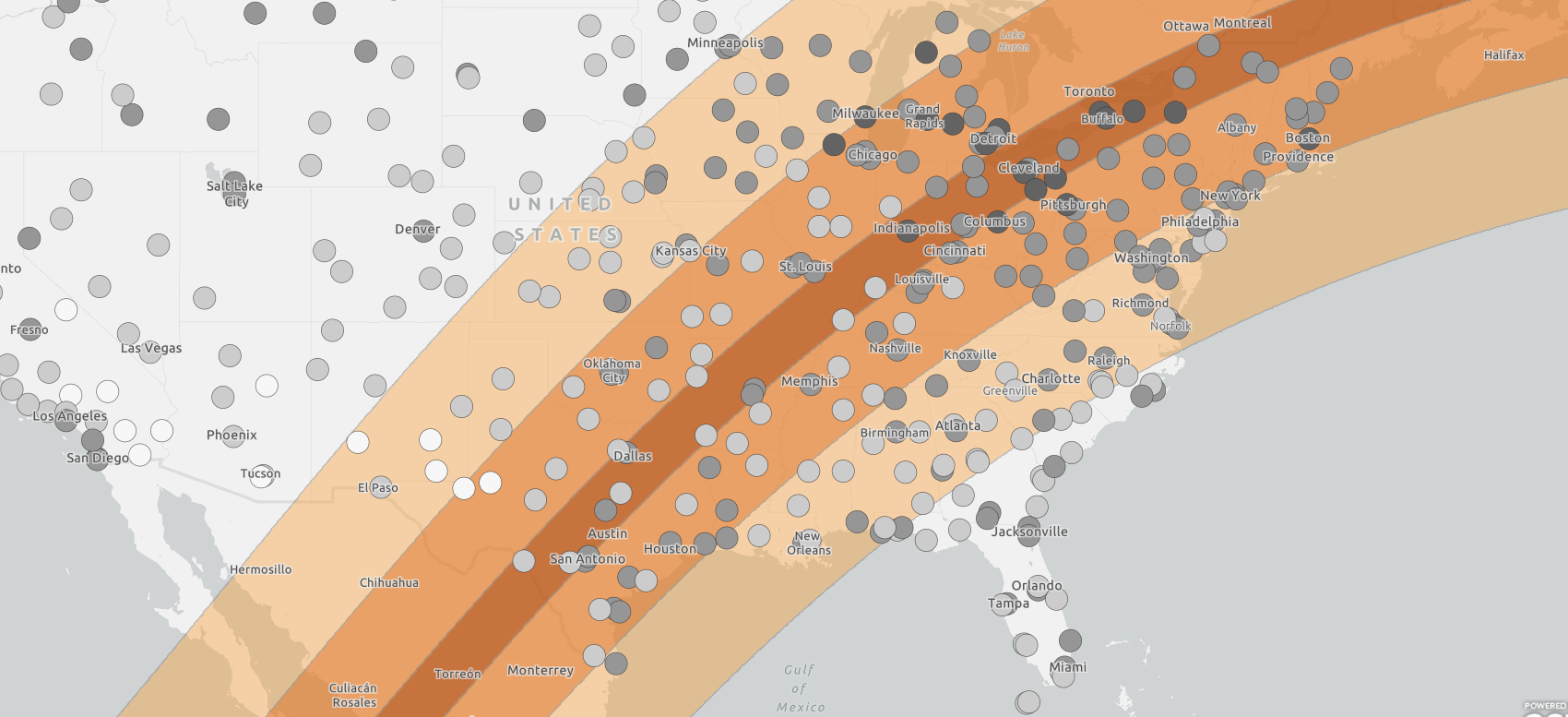On Monday April 8, the Great American Eclipse will grace a large strip of North America, providing sky-gawking observers with the last total solar eclipse in the contiguous US and Canada until 2044. If you’re gearing up to enjoy this spectacle, be wary that there is still one uncontrollable hurdle to overcome: cloudy weather.
Oddly enough, common cumulus clouds tend to disappear almost instantly during solar eclipses. Nevertheless, heavy cloud cover can still obstruct or diminish the view of the solar eclipse. For ideal viewing conditions, you want a pleasant day without a cloud in the sky.
Only a thin strand of North America will be in the solar eclipse’s path of totality, the geographical track where people viewing the eclipse will be able to see the Moon’s shadow completely covering the Sun.
This narrow path of totality will travel diagonally up from Mexico before passing through Texas, then Oklahoma, Arkansas, Missouri, Illinois, Kentucky, Indiana, Ohio, Pennsylvania, New York, Vermont, New Hampshire, and Maine. It will then pass into Canada in Southern Ontario, and continue through Quebec, New Brunswick, Prince Edward Island, and Nova Scotia.
Of course, weather will vary from region to region. Weather forecasts are more accurate the closer they are to the day in question – and it’s still too early to tell with certainty whether April 8 will be a cloudy one.
However, you can see whether history is on your side. It’s possible to gain a decent insight into what the weather may hold on April 8 by studying long-term historical average cloud cover. Using tons of historical data, this has been beautifully illustrated in an interactive map developed by NOAA’s National Centers for Environmental Information and the North Carolina Institute for Climate Studies.

A screenshot on March 21 of the interactive map, showing potential weather conditions during the April 2024 Total Solar Eclipse based on historical trends. The darker the dot, the higher the chance of cloud cover.
Image credit: NOAA’s National Centers for Environmental Information/the North Carolina Institute for Climate Studies
As you can see, historical data suggests that early April days are not too cloudy for much of the US, especially parts in the south where the eclipse’s path of totality will run through. The skies are generally not too cloudy for the southern US at this time of year, although things can be much cloudier around northeastern states near the Great Lakes, like Ohio and New York state.
This year is also seeing the end of El Niño, a god-like climatic force in the Pacific Ocean that influences the weather across much of the world. Although they are starting to fade, El Niño conditions will still be present on April 8 and may have a slight influence on cloud coverage.
According to Eclipsophile, a blog run by an eclipse-loving meteorologist Jay Anderson, previous April months that have followed an El Niño winter generally have been slightly less cloudy than non-El Niño years in Texas and Oklahoma. Beyond these two states, the impact of El Niño on cloud cover in April is hard to tell.
Truth be told, we’ll have to see what April 8 will have in store. Weather conditions can change hour-by-hour and cloud cover can shift within a minute’s notice. If you want to prepare for the Great American Eclipse, the best thing you can do is get a decent pair of eclipse glasses. Beyond that, a lot will be down to luck.
“It’s going to be what it’s going to be,” Anderson, who has traveled to see every total solar eclipse since 1979, told the New York Times.
Source Link: Will Cloudy Weather Ruin Solar Eclipse Day? Historical Data Weighs In